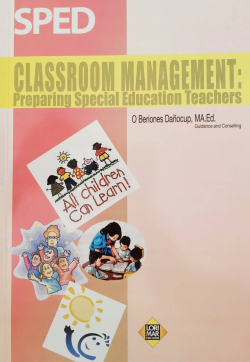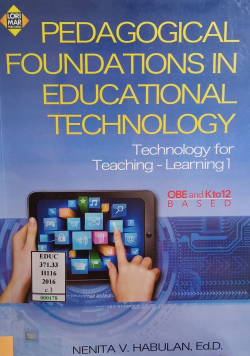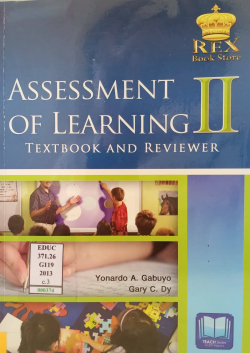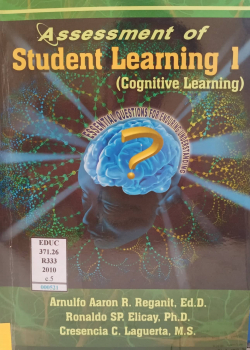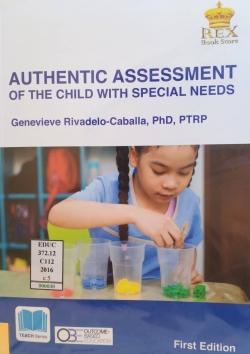Introduction to special education

Buy online ($)
Type
Book
Authors
ISBN 13
9789712348068
Category
EDUC
[ Browse Items ]
Publication Year
2007
Publisher
REX Book Store, Philippines
Pages
xi, 315 pages
Subject
Schools & their activities; special education
Abstract
The continuum of learners indicates that in any given class, majority of the children have average intellectual ability, while & smaller number either belongs to the sub-average group or to the above average group. All three types of learners are found in most classrooms in the Philippines today, together with some children with sensory and physical disabilities, as well as behavior problems. To prepare the beginning teachers for the inclusion of exceptional children in regular classes, a course on the foundations of special education is now included in the teacher education curriculum. This textbook introduces and guides the teacher to the world of special education.
The chapters in the book begin with success stories and vignettes about exceptional Filipino children and youth or with disabilities who received special education services from the Department of Education or who are presently enrolled in special education programs. The vignettes are meant to inspire future teachers with real life accounts of students with disabilities who have risen above their impairments and handicaps to achieve their goals in life through special education. The success stories breathe life into the famous statement of Helen Keller who said, "While they were saying it could not be done, it was done."
The book is written within the context of the Philippine educational system. And who else could have done a better job of documenting the milestones of the country's Special Education program than the specialists themselves who were participants and contributors to the growth of the Special Education movement, two of whom are at the helm of the Department of Education at present?
Each chapter contains an advance organizer addressed to both course professors and students, as well as the cognitive, affective and psychomotor objectives that the students are expected to achieve. The chapter ends with a formative evaluation of content knowledge thus learned together with a section that encourages the students to "touch base" with a special education program in a school nearest their homes. The face-to-face experiences with special children intend to strengthen the future teachers, theoretical information as they are asked to analyze and apply content knowledge to real Special education classes.
Much of the content knowledge on the nine categories of exceptional children and youth are taken from American textbooks on the foundations of special education and related references. Many of these textbooks are used in the various Specialization courses in the Special Education graduate degree programs at the Philippine Normal University and other colleges and universities. The definitions, Classifications, characteristics and other information about each area of Specialization are universally recognized outcomes of intensive scientific studies
and research conducted by experts in respectable universities and practicing special education teachers in the American school system where a good number of Filipino teachers are employed, as well as members of organizations and support groups.
Supplementing the foreign references are scientific papers written by our own specialists and practitioners that were presented in international and local conferences and fora. Other local sources of content knowledge include theses and dissertations, exemplary papers of graduate students, and Internet materials.
Course professors and students alike are encouraged to read the original references and other books available in various libraries. The Internet offers updated information on different areas of specialization although the articles are abbreviated. Local broadsheets, professional journals, and even commercial publications publish articles related to special education almost on a regular basis. A number of films that feature people with disabilities and giftedness are available and are worth discussing and analyzing in class.
In view of the implementation of inclusive education for students with disabilities in Philippine schools today, it is likely that a beginning teacher will find in his or her regular class children with mental retardation, learning disabilities, emotional and behavioral disorders, communication disorders, blindness and low vision, hearing impairment, physical disabilities, and multiple and severe disabilities. This book will be a valuable companion in enabling the new teacher to accept them and educate them in the regular class with the help of a trained special education teacher.
The chapters in the book begin with success stories and vignettes about exceptional Filipino children and youth or with disabilities who received special education services from the Department of Education or who are presently enrolled in special education programs. The vignettes are meant to inspire future teachers with real life accounts of students with disabilities who have risen above their impairments and handicaps to achieve their goals in life through special education. The success stories breathe life into the famous statement of Helen Keller who said, "While they were saying it could not be done, it was done."
The book is written within the context of the Philippine educational system. And who else could have done a better job of documenting the milestones of the country's Special Education program than the specialists themselves who were participants and contributors to the growth of the Special Education movement, two of whom are at the helm of the Department of Education at present?
Each chapter contains an advance organizer addressed to both course professors and students, as well as the cognitive, affective and psychomotor objectives that the students are expected to achieve. The chapter ends with a formative evaluation of content knowledge thus learned together with a section that encourages the students to "touch base" with a special education program in a school nearest their homes. The face-to-face experiences with special children intend to strengthen the future teachers, theoretical information as they are asked to analyze and apply content knowledge to real Special education classes.
Much of the content knowledge on the nine categories of exceptional children and youth are taken from American textbooks on the foundations of special education and related references. Many of these textbooks are used in the various Specialization courses in the Special Education graduate degree programs at the Philippine Normal University and other colleges and universities. The definitions, Classifications, characteristics and other information about each area of Specialization are universally recognized outcomes of intensive scientific studies
and research conducted by experts in respectable universities and practicing special education teachers in the American school system where a good number of Filipino teachers are employed, as well as members of organizations and support groups.
Supplementing the foreign references are scientific papers written by our own specialists and practitioners that were presented in international and local conferences and fora. Other local sources of content knowledge include theses and dissertations, exemplary papers of graduate students, and Internet materials.
Course professors and students alike are encouraged to read the original references and other books available in various libraries. The Internet offers updated information on different areas of specialization although the articles are abbreviated. Local broadsheets, professional journals, and even commercial publications publish articles related to special education almost on a regular basis. A number of films that feature people with disabilities and giftedness are available and are worth discussing and analyzing in class.
In view of the implementation of inclusive education for students with disabilities in Philippine schools today, it is likely that a beginning teacher will find in his or her regular class children with mental retardation, learning disabilities, emotional and behavioral disorders, communication disorders, blindness and low vision, hearing impairment, physical disabilities, and multiple and severe disabilities. This book will be a valuable companion in enabling the new teacher to accept them and educate them in the regular class with the help of a trained special education teacher.
Description
Illustration ; Newsprint ; 23 cm
Includes bibliographic reference and index
Includes bibliographic reference and index
Number of Copies
5
| Library | Accession No | Call No | Copy No | Edition | Location | Availability |
|---|---|---|---|---|---|---|
| Main | 382 |
EDUC 371.9 I373 2007 |
1 | EDUCATION REFERENCE | Yes | |
| Main | 383 |
EDUC 371.9 I373 2007 |
2 | EDUCATION REFERENCE | Yes | |
| Main | 384 |
EDUC 371.9 I373 2007 |
3 | EDUCATION REFERENCE | Yes | |
| Main | 385 |
EDUC 371.9 I373 2007 |
4 | EDUCATION REFERENCE | Yes | |
| Main | 386 |
EDUC 371.9 I373 2007 |
5 | EDUCATION REFERENCE | Yes |
